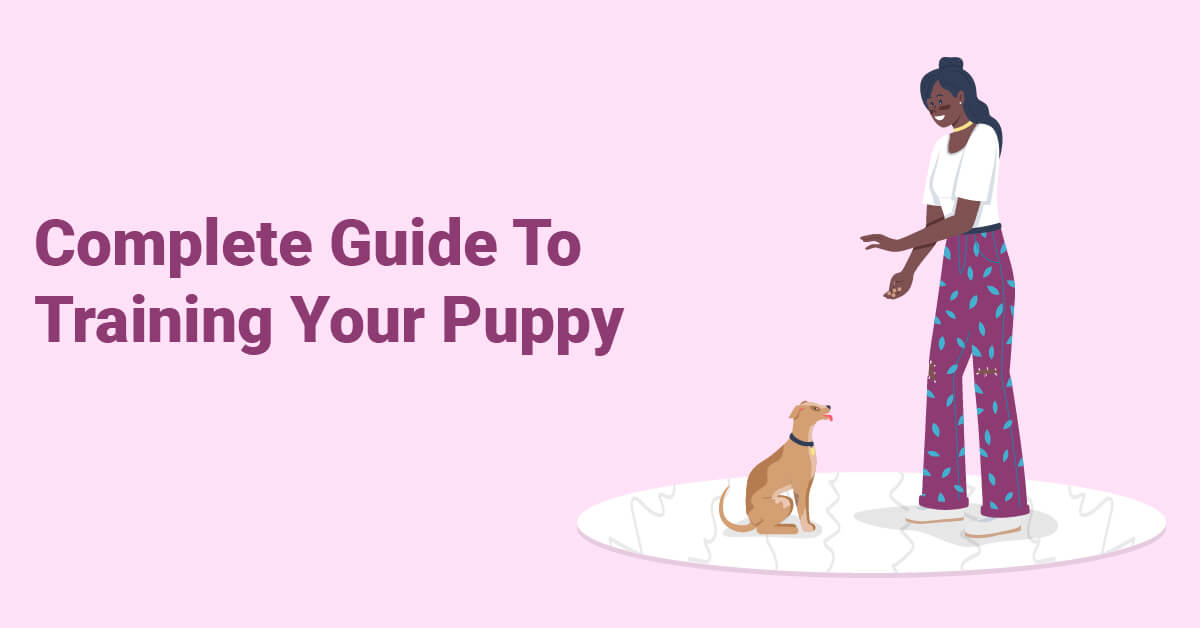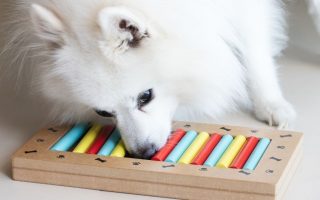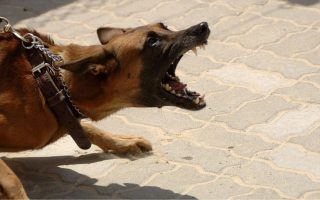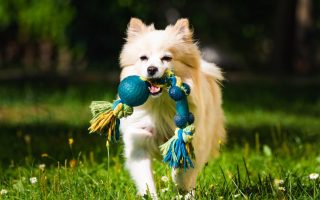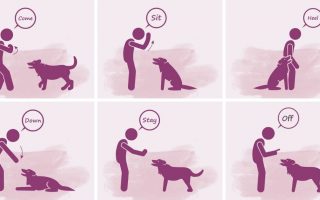When you get a new puppy, all you want to do is cuddle up with them and admire how adorable they are.
However, one of the main parts about getting a new puppy is that you need to remember to train them.
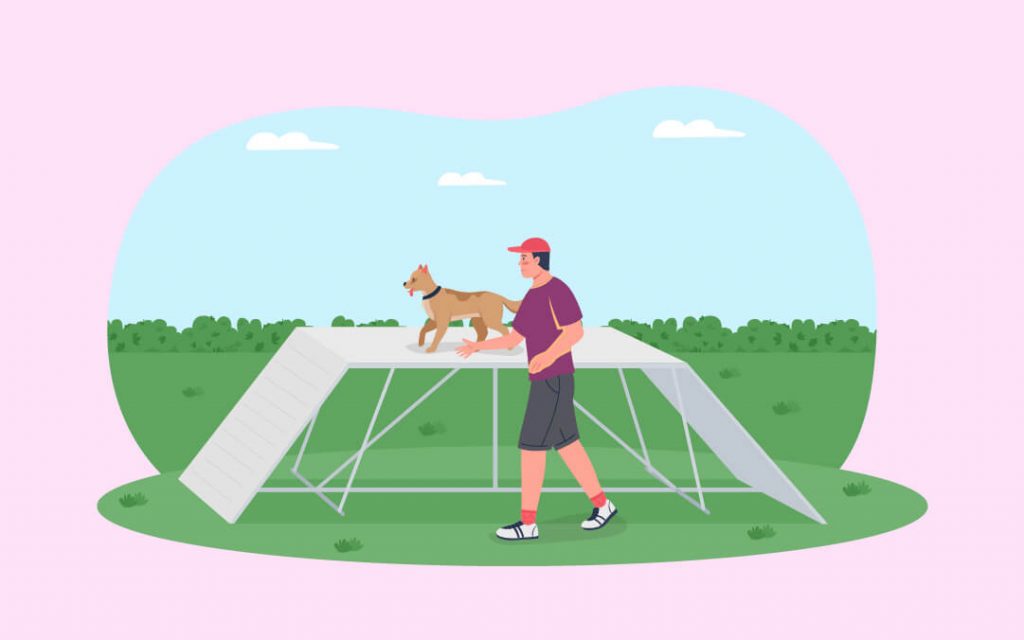
They will need your help to learn about the new world around them, and they won’t learn how to go to the toilet or how they should behave in their home, around new people, or other animals without your help.
This is why it is imperative that you train them and do so correctly and in good time.
The Importance Of Training Your Puppy
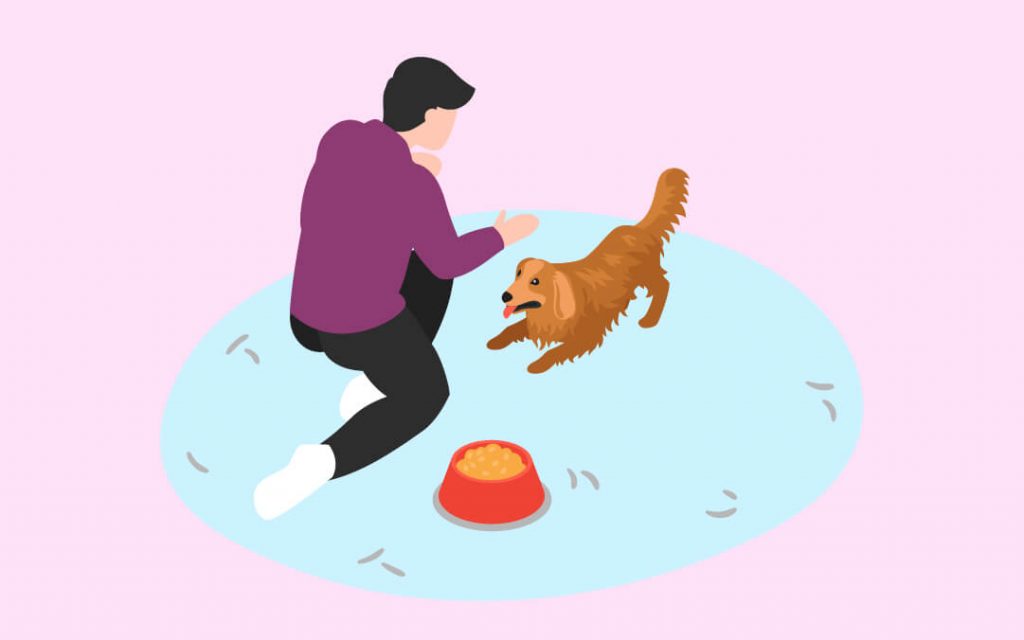
Training your dog such as teaching them how to respond to simple cues will make your life and your dogs’ life easier.
Not only will positive reinforcement in training teach your dog good etiquette and manners, but it will also help to create a bond between you both.
There is much joy in learning and in teaching, and dogs will enjoy learning new skills, and feel proud when they become masters of them.
Not only this but in training your dog will get to spend more time with you- their favorite person in the whole world, and this is a major part of dog training.
With the help of their human, dogs can learn plenty of amazing skills that they will use throughout their lives, this includes skills that will keep them safe and help them to interact with the world in happy and healthy ways.
We often hear training being referred to as obedience training, but the process is not about teaching your dog to do or not to do something, it is about helping them learn something.
The learning relationship you build with them begins with trust.
It is all built through shared activities such as meeting new friends, playing games, playing with toys, going on adventurous walks, and learning together.
Training your puppy should never be about teaching them what to do and what not to do, it should be about solidifying your bond and learning together.
Remember, no animal will learn anything in a negative way, building trust and using positive associations will help to build up that relationship between human and pup.
Remember that science tells us that positive reinforcement is the most effective training method. It is actually used in everything from pets, to zoo animals, even to people.
Remember as you were growing up and learned how to behave, you would behave better as a child if you were rewarded for doing something right, rather than punished for doing something wrong.
House Training
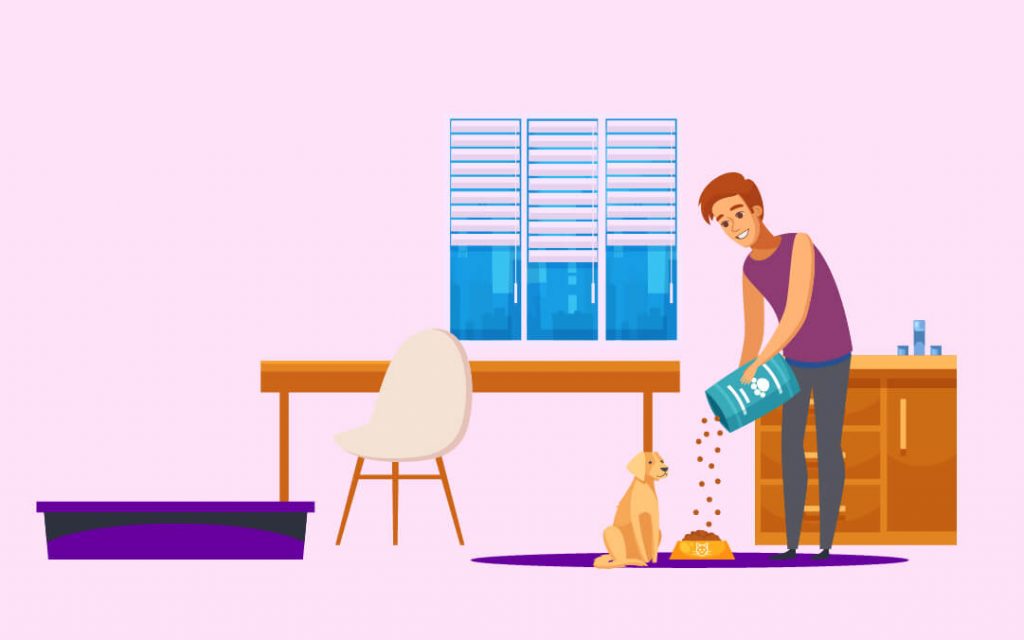
House training is the first step. Unless you plan to keep your dog outdoors, although it is not recommended.
You will need to teach your dog where is off-limits and where their realm of the house is.
This type of training is also known as housebreaking or potty training, and it is the first thing you should do. Crate training can be incorporated into this, but more on that later.
Scheduling
Scheduling is important when you are training a dog. Animals do not have a concept of time like we do, and they do not wear a watch, so a dog’s understanding of time is built around the scheduling we create.
They will understand when it is time for food by having regular feeding times.
They will understand when it is time to let out their energy if we set a regular time to go for a walk.
This applies to any animal, generally. Animals understand schedules and maintaining consistency is key.
Consistency is the best way to house train your pet. Try getting up at the same time every day and taking them outside right away.
Feed them at the same times each day and let them out as soon as they have eaten.
As your dog gets older, you may even be able to anticipate when they will need to go to the toilet based on when they last ate, provided that you stick to a regular schedule. It is beneficial for you and for them.
Signs
The last thing anyone wants is a mess inside the house, and yes, we mean fecal matter in the carpets.
So, if you see your puppy sniffing around, circling, or even pacing, it is probably time to take them outside.
If you catch them in the middle of an accident, say ‘No’ firmly (this does not mean shouting), and then take them outside to finish, praising them when they do.
They will learn that going to the toilet outside will give them praise, and they will want to go outside.
You should never punish a dog by hitting them or by pushing their nose in the mess, this only teaches them to fear you.
If you do happen to find an accident inside the house, but you do not catch your puppy in the act, do not punish.
The dog will not associate the punishment with the action, and instead, they will get confused about what they’re being punished for.
Keywords
When you are training your puppy to use the outside as their bathroom, it can help to use a key word for them to associate with going outside.
You could say something like ‘outside’ or ‘bathroom’ and so on. Doing this consistently will help them learn it as a command.
Do not forget, though, that when you are training your dog not to defecate in the house and instead go outside, you should always take them to the same area outside.
This is a clever technique that uses the aromas in that area of the garden/ yard/ outdoors, which will encourage them to defecate in that location again.
When they go to that spot, offer them praise.
Doing this will not only make them feel more comfortable and give them a designated restroom, but it will also prevent you from finding dog mess spotted all over your garden, instead, it will only be in one particular area of your yard.
Using Crates
When you go away from home, your puppy should stay in a crate or kennel.
You can buy a larger crate for them to grow into, but you should always place a divider in it so that it is only large enough for your puppy to turn around and lay down in.
Your puppy will not want to soil in its own area, so you should be careful not to let them stay in there for more than four to six hours, or they may have no choice but to relieve themselves in that area.
Since many of us work, many of us are not home for long periods of time each day, in this case, try to return home on your lunch break to let the puppy outside.
If not, you can also arrange for someone else to do so if you cannot come home.
Crate training is good if you are away from home, but it is also good for travel, vet visits, and as a general assist to house training.
Let’s look a little more into crate training.
Crate Training
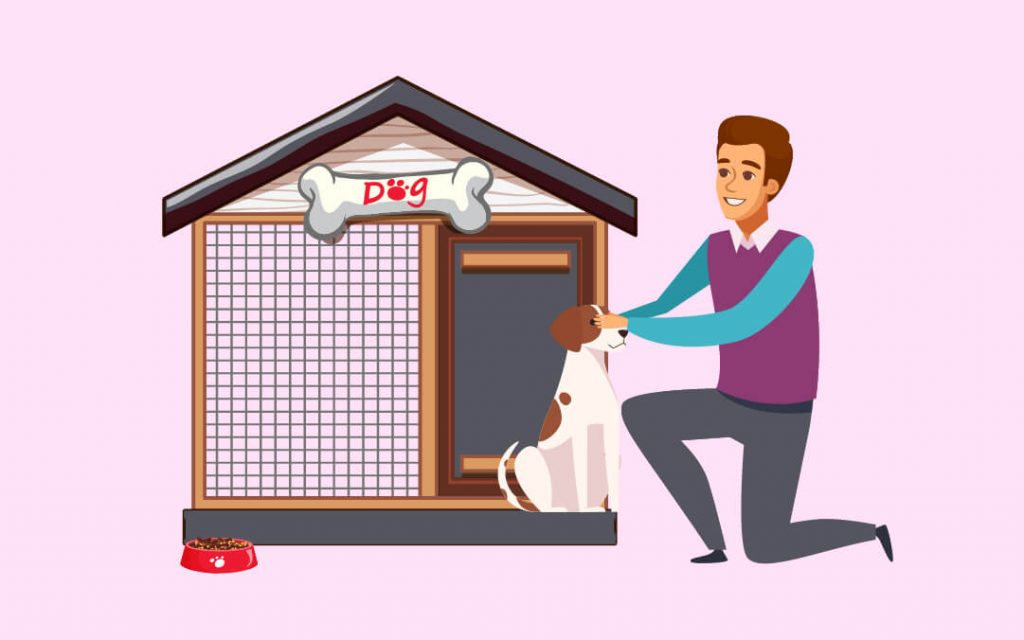
Crate training is something that we go through to teach our puppy that their crate is a special happy place all of their own, and a place where good things happen, this will help them to become willing and calm. It makes life easier for us and for the dog.
A dog that has been crate trained will voluntarily go in and out of their crate without force.
They will feel comfortable being locked in, and they will be calm inside, too. No fuss, no stress.
Attention To The Crate
To start off, your best bet is to have it lying around in an area that the puppy feels familiar with. This will help them to get used to its presence.
Then they will start to pay attention to the crate, they will give it a sideways glance, look at it, or sniff at it. When they do this, give them a click and treat.
As they get more comfortable with it than may start to move toward the crate, if they do this then click and treat.
If they do not, then click for attention and toss the treat slightly towards the crate, so they head towards it.
After this, they may start to pay some more attention. They may pay attention to the entrance, putting their head in, paw in, or just generally get close to the entrance. If they do this, provide a click and treat.
The click will be a sound they will associate with the treat, and they will associate the treat with the crate. Doing this is all about positive reinforcement and association.
Getting Into The Crate
Once your puppy has started to feel more comfortable with the crate, and they have got close to it and the entrance, it is time for them to get in.
This process may be slow, so patience is key here.
First, they may start off by putting their paw into the crate. If they do this, then give a click and a treat, so they know that this is good.
Then they may put both of their front paws into the crate, again if they do this, then give a click and a treat.
Now, the next step is for them to get completely inside the crate, all four paws. This does not mean they will lay down, but if all four paws are inside the crate.
Once they do this, give a click and a treat. At this point, it is also ideal for you to create a keyword for the crate.
So you may want to say ‘crate’ or something of the sort for them to start associating with this.
This cue you will use when you want them to go in the crate once they are trained, so start using it now and often to really have the desired effect.
Comfort
Once your pup has built up crate confidence, you want to ensure they feel comfortable in there.
So, one thing you can do is to start stepping back from the crate.
Have them lay down in it and close and latch the door then step back, return straight away and open the door then click and give him a treat.
After this, you can leave it longer and longer. At a point where you wait before returning to open the crate.
Eventually, you can get to a point where you leave the room (almost), and once they are comfortable with this leave the room entirely.
Then when they are comfortable with you leaving the room then reopening the crate, start leaving it longer and longer before you return to open it.
So at first, it can be a few minutes, then perhaps half an hour, then an hour, and so on, until they are completely comfortable being inside the crate and on their own.
Leash Training
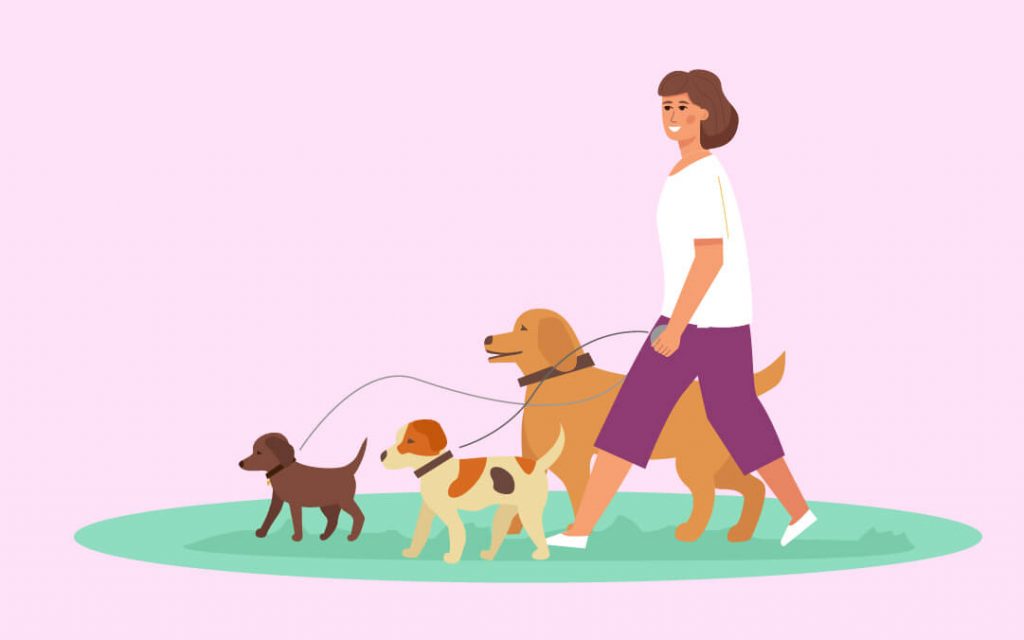
If you’ve only ever passed dogs out in the park, you might not be aware that no dog naturally knows how to walk on a leash.
Every dog actually needs to be leash trained. It is important for your safety and the safety of the dog that they know how to walk on a leash.
They could end up chasing squirrels, cars, and even other people. Dogs also have a prey drive, which means they could easily run away and get lost.
Despite what you and your dog may want, you cannot always leave them to run around off-leash, so leash training is one of the first things you should know how to do.
Introducing The Leash
Aside from what we mentioned above, there is much else that makes leash training significant, it is not all just down to stopping your dog from running off or chasing things they shouldn’t.
First of all, if your dog pulls on the leash, you will probably get frustrated, this could cause you to lose your temper or resent walking them in the first place.
With enough frustration you might even resort to punishment, all of these negative things will impact you and the dog.
Similarly, the dog will also get frustrated as they may feel like they need to ‘strain against the leash’, which could result in aggression or stress.
Let’s not forget that a dog pulling on their leash will have health consequences too, as they could injure their neck doing this.
The tension is also important, as it helps to communicate with the dog. If it suddenly goes taut, your dog may be afraid or in fight-mode.
How you hold the leash and how they pull on it will help you tell each other how you’re feeling.
Techniques
Once you have all the gear you need, you need to start training your dog.
Training your dog to walk on a loose leash with no tension in it will train them to walk within the length of the leash.
You can start this off, practicing in the house without a leash at first.
Call your dog to your side and reward them with a treat, walk forward a few steps engaging with the dog and when they meet you at your side again, give them another treat.
Repeat this over and over, and when they have mastered loose leash walking inside, take them outdoors. Preferably in a distraction-free zone, so they can become a pro.
To teach them to heal, lure them to your side with a treat, and reward them when they are next to you.
Continue to reward them without moving, then move forward and lure them with a treat. Continue this process, only rewarding the dog at your side.
Mixing things up here can help, pick the pace, and change it, or even stop randomly.
Once you have nailed this, teach them the heel cue, say it once, and reward them when they come to your side.
Once done, give them a cue like ‘all done, and throw a treat in another direction. Repeat over until mastered.
Fixing Issues
There may be some issues when leash training, but remember that patience is a virtue, and Rome wasn’t built in a day.
If they pull on the leash, stop, and do not yank. Just call them and when they do come, praise them, then continue. Do not keep walking when they pull, as it may hurt them.
If they lunge at something (like a squirrel), regain their attention with a treat. This is best done before the lunge.
Should they bark excessively, ensure they get enough physical exercise and mental stimulation to prevent them from being prone to barking.
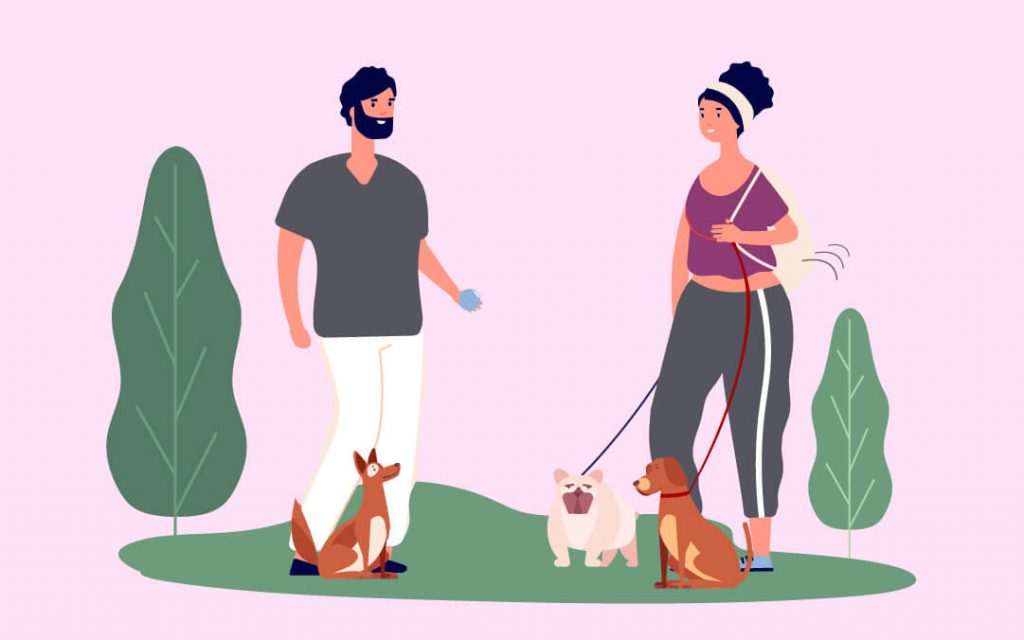
Social training, or socializing your dog, means training your puppy to accept new people, animals, and places but exposing them to these things.
Socialized dogs are less susceptible to behavioral problems, and they are more often welcomed by others too.
Doing so can also help to prevent the development of fears and phobias as well.
Simply socializing your dog means that it will make them happier and more well-behaved.
Dogs are social animals, and they have much love for those around them, but any animal can become antisocial if isolated enough, so socialization is important.
Why do it?
Socially training your dog is important no matter what.
Social training prevents phobias and fears; helps to keep your dog’s behavior in tip-top condition; and helps them mingle with other humans and animals well, as well as keeping them feeling calm in new places.
However, it is also beneficial to people who may have more than one dog.
If you already have one dog, and you bring in a new dog to that home, then you will need to socialize your new dog, to allow it to be properly introduced to your current dog.
If this is the case for you, then do note that it can take several weeks for them to get used to each other, and therefore you must be patient.
Socializing is not just for owners with multiple dogs, though, this can also be required if you have other pets too.
Socialization with new family members, or people, is also important, especially at early stages.
Starting Out
In the event that you are a multiple-dog household, then the first few times that your current dog interacts and meets the new dog, it is best to be on neutral grounds.
This is best if you have someone else to help, but you can do it alone.
You should take them to a neutral place, separately. This could be somewhere like the park, although you should be somewhere with no other dogs around as a distraction.
Allow the dogs to meet through a barrier if you can, a fence will suffice.
It is also best to avoid them being on a leash, as pulling on the leash could increase anxiety and aggression.
You should keep these interactions light, meaning you should also stay calm, relaxed, and upbeat too.
Keep an eye on the body language and behaviors of your dogs, and if you notice any signs of over-excitement or anxiety, then note the session as over.
If they remain calm, however, you can allow them to meet without a barrier. Do separate them at the first sign of tension, though.
This can also be applied with meeting friends, dogs as well, and even people. Keep a barrier in place first.
Always Supervise
If you do have two dogs living together (you bring a new pup to live in a home that already has a dog), then you need to always supervise their interactions.
While a majority of dogs can eventually be left alone together, this should not happen for the first few months, and for some dogs, you may not ever be able to trust them alone together.
Once you get to the point where the dogs can interact freely in your home, ensure that you are present to supervise in these moments.
Observe chemistry and body language, separating them if you have doubts. Always do your best to remain calm, even if there are tensions building.
Providing plenty of toys and enrichment for them to keep them distracted and happy, however, do not remove them if they do become the source of any conflicts.
Clicker Training
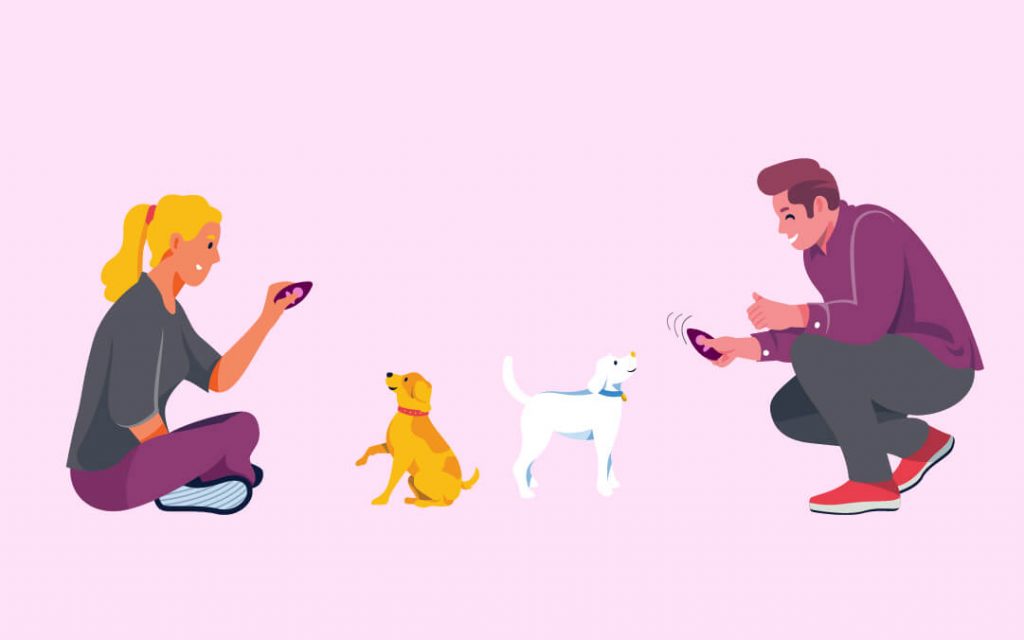
Clicker training is a commonly used form of training that involves positive reinforcement. It is a super simple and effective method for training dogs.
Although you can still train your dog without the use of a clicker, many people do find it helpful, and it is often used by a majority of dog owners.
It just makes it easier.
With clicker training, you will find that you can easily and effectively teach your dog all kinds of basic, advanced training, commands, tricks, and so on.
It is fast and easy to use, and it is not hard to learn to do, either.
Clicker training can be used for any commands and types of training, all you need is a clicker and possibly some treats for positive reinforcement.
Using a clicker and some treats together will get the dog to positively associate the clicker with treats, and eventually, you can remove the treats altogether, and when mixing in voice commands you can eventually remove the clicker too.
Basic Training
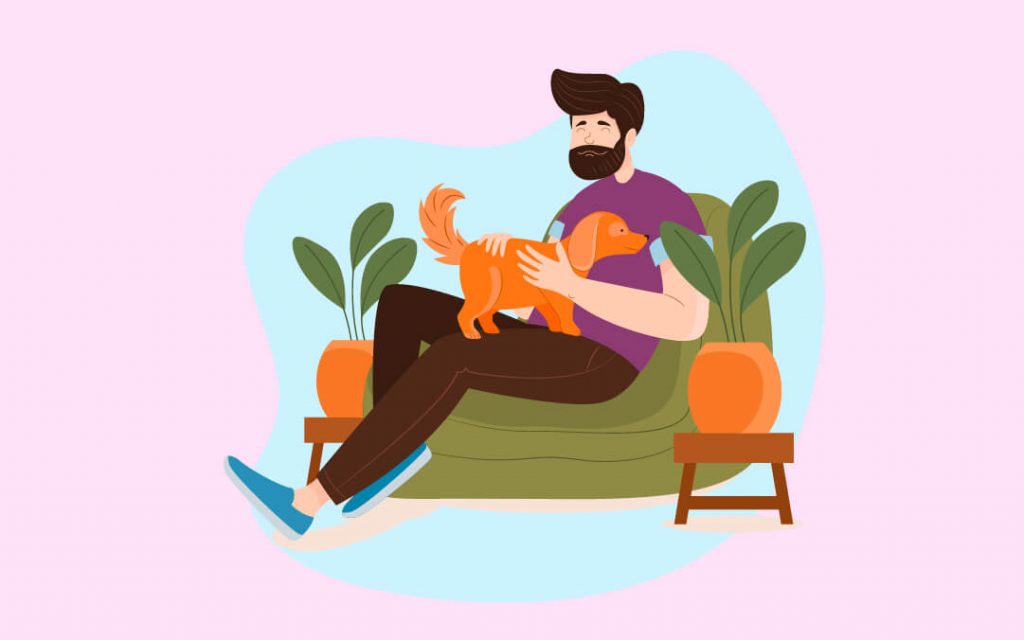
If you are a dog person, which we will assume you are, we are certain you are already aware of the many basic training commands and dog tricks that every dog should know.
Things such as come, back up, sit, stay, paw, and so on. It gives the dog structure and can help overcome any behavioral problems and keeps them safe too.
While most of us know these basic commands and tricks, we will talk a little about them to cover any information gaps you may have.
Positive Reinforcement
We have already mentioned this a bit, but we want to reinforce just how important it is.
Positive reinforcement is absolutely imperative in successfully training a dog, or indeed, any animal.
There are two steps to this; praise, and reward. Using positive reinforcement lets the dog know they did a good job, and they thrive on this sort of positive interaction, perhaps as an innate desire to appease their owners.
Rewards give the dog an incentive to act the way in which you desire, this can vary depending on the dogs’ personality, but dog treats are often the most commonly used reward.
While sometimes, if a dog does not respond in the way that you hope, or if they are a bit difficult to train you can get frustrated and annoyed, it is important to avoid using any forms of negative reinforcement.
Negative reinforcement can frequently do the opposite of what you want and can lead to more behavioral problems, and more of a struggle in training.
Common Commands
There are many common commands used by dog owners that are included in basic training.
Basic training means things that almost every dog is trained to do.
These include commands such as sit, down, stay, okay, come, drop it, leave it, and watch me.
With these commands it will always work the same way, regardless of which command it is, you need to first get the dog’s attention.
Take a treat and hold onto it tight, letting your dog sniff your hand. Move it around so the dog follows.
This is especially useful for pups, as they may have short attention spans when training (it’s a new, exciting world, after all).
These commands are simple and will be used nearly every day.
We train our dogs to do them because they come in useful in everyday situations, and help to build our bond with our furry friends.
They will be useful at the park, at home, meeting new people, and in new areas.
Having these commands mastered means that your dog is also less likely to get anxious when presented with new situations as well.
Advanced Training
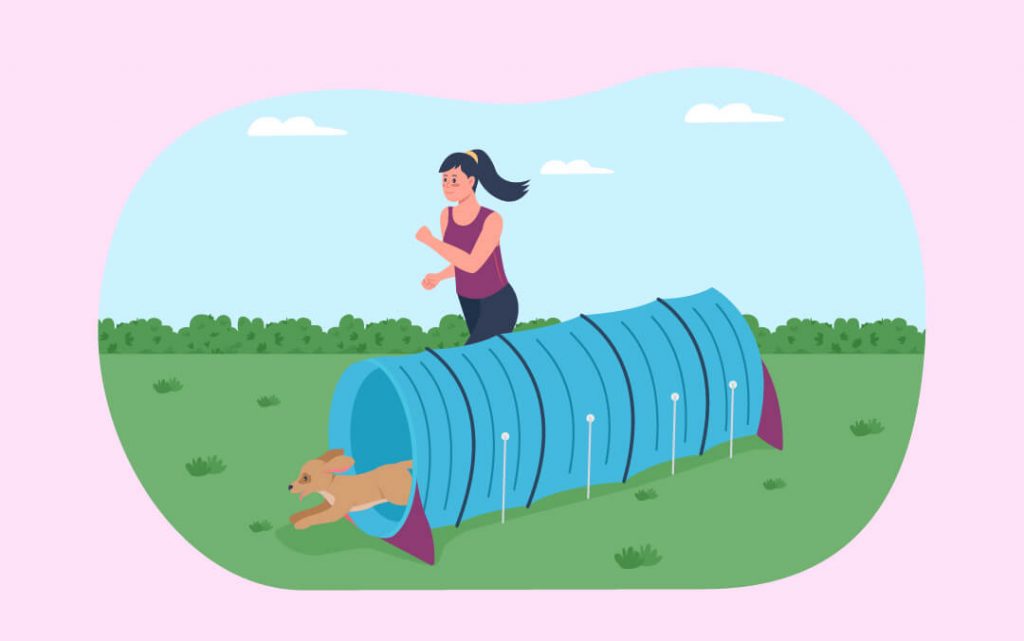
Once you have taught your dog all the basic tricks, you can always consider trying advanced tricks, of course, this is not compulsory and dogs do not always need to know how to do these.
However, these activities can help to keep your dog fit and active, they will be mentally stimulating for them as well, and it will also strengthen the bond between the two of you more.
When To Start Teaching More
Much like us, dogs are all unique when it comes to learning. Some dogs will pick up training commands, and tricks right away, while others might take longer.
However, before you move onto more advanced skills such as ‘wait’, ‘rollover’, ‘shake’ and so on, ensure that you get the foundations of training down.
Also, remember, that training never ends, much like we never stop learning.
As a pet owner, it is your job to keep up your training, always practice the commands you have taught your dog, and only move on to the more advanced stuff as your dog grows and is a master at the basics.
It is up to you when to begin advanced training, but make sure your dog is ready for it before you try it. Trying before they are ready can result in difficulties.
Summary
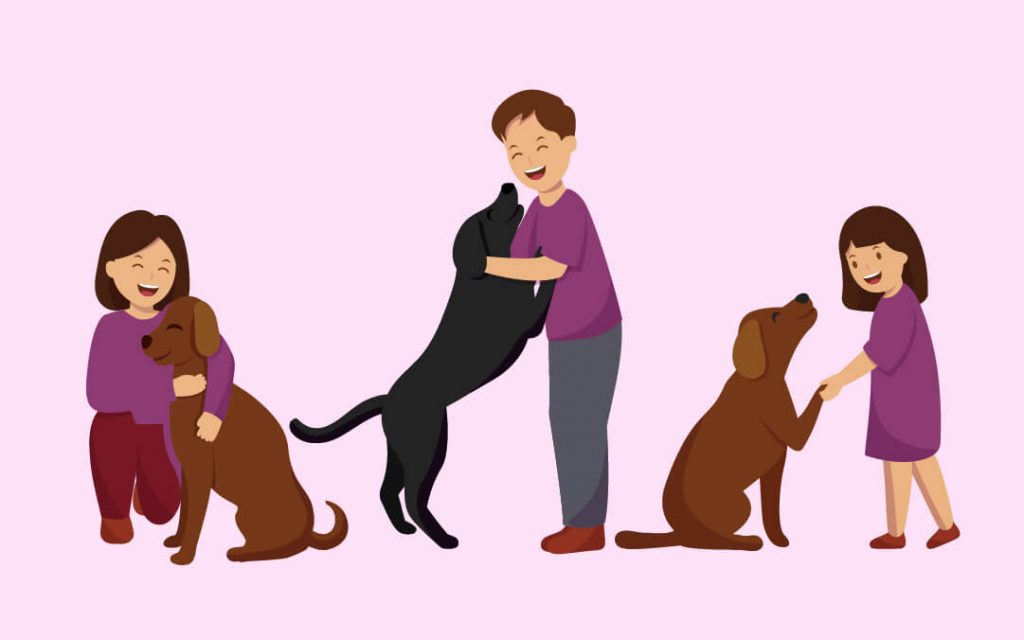
The main factor in training your puppy is using positive reinforcement.
While all the training methods we have spoken about today, and each type of training that exists, the one thing that runs through all of them is positive reinforcement.
You cannot properly train a dog without using positive reinforcement, so prepare yourself to be patient and calm throughout the process, and reward even the smallest successes.
You are on this training journey with your dog, and it will help you to understand your dog’s personality better as you do this with them.
It will not just train your dog to develop admirable behaviors, but it will also bring you closer together as well.
Training is best begun when the dog is young so that they can maintain and practice these skills throughout their lives.
Using them from a young age will prevent any possible flaws in their training from seeping through too.

